A continuation of my journey into the world of cold proofing the shaped, and sometimes shapely, baguettes. This reporting of the trip again required no passport or Global Entry/Trusted Traveler documentation. Just a curiosity of what happens when I retard the baguette dough in its final phase prior to its own voyage from couche to oven. My interest in investigating this method is nothing more than an experiment in learning about ways to control the time/temp elements of fermentation, baby steps at a time.
In continuing, I made 4 new batches, one in error. And the results that I’ve so far concluded is that the final retarded proofing seems to not play much of a role in the time element. Certainly not as much as I had thought it would. It also plays little role in the baking equation either, time-wise.
On the bright side, the dough is cooler than room temp proofing, therefore stiffer and easier to transfer to peel and also to score. It also helps me reorganize my refrigerator to accommodate the baking sheet that the couche resides on, while rediscovering greenish items tucked in the back that either qualify as very new cheese or very old meat. (Thank you Oscar Madison for that memory). And now for this week’s line-up:
Bouabsa olive-rosemary with 21% Kalamata olives and chopped rosemary added at the first letter fold. Two observations here, neither of which may be legitimate. I wonder if the rosemary leaves, as small as they are, affected any of the gluten development since they can still act as “micro-razors”, interrupting and perhaps cutting the strands during fermentation and subsequent letter folds. And secondly, whether the weight of the olives suppressed the oven spring. From the top down the baguettes have a bit of the look of overproofing, although the cross section of the bread does not.
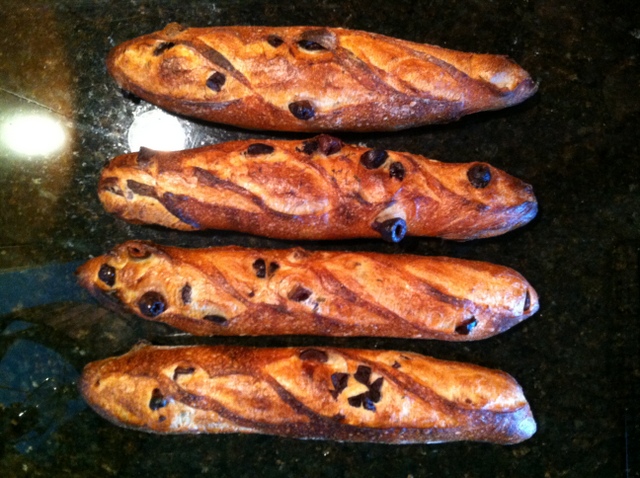
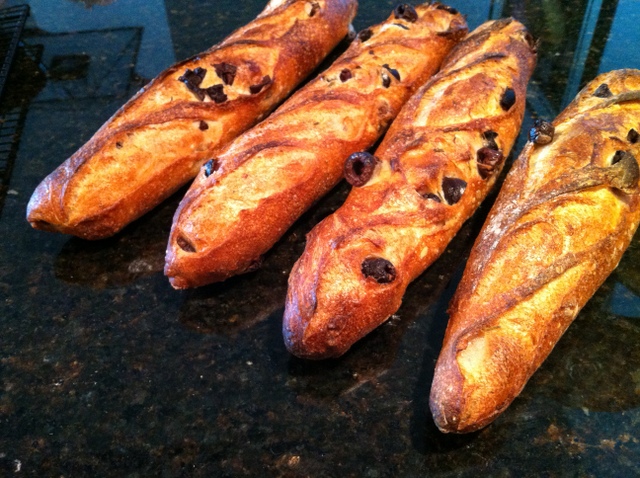
Gosselin SJSD. These are just such happy, tasty, lovely beasts. I dropped the hydration of these from 75% down to 72% a number of months ago, as the dough remained a bit too sticky for my liking. However, next time around, if I’m still playing with the cold proof, maybe I’ll kick the hydration back up again.
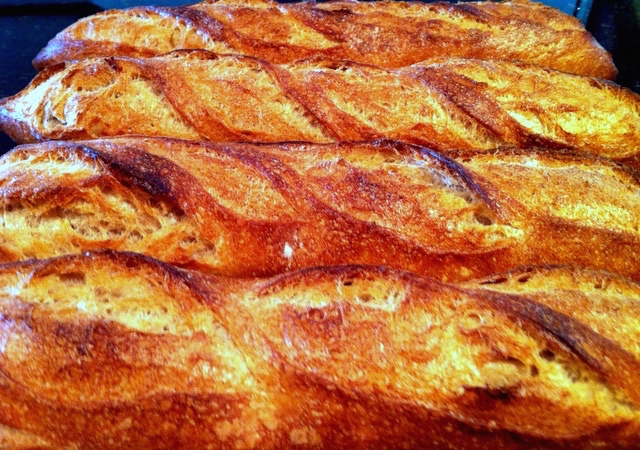
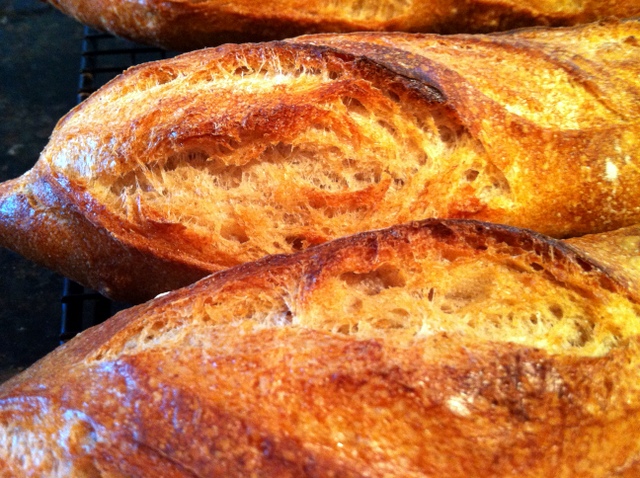
36 Error SJSD. Okay so it was supposed to be 36 hour, but I made a rookie error along the way, officially disqualifying them as the real deal. Instead of retarding my autolyse overnight, I added the levain build to the freshly mixed F&W, autolysing at room temp for a mere 30 minutes. Therefore I changed some critical parameters and turned the 36 hour formula into a ~30 hour Frankenstein. No issues with the outcome, but it wasn’t what I was shooting for.
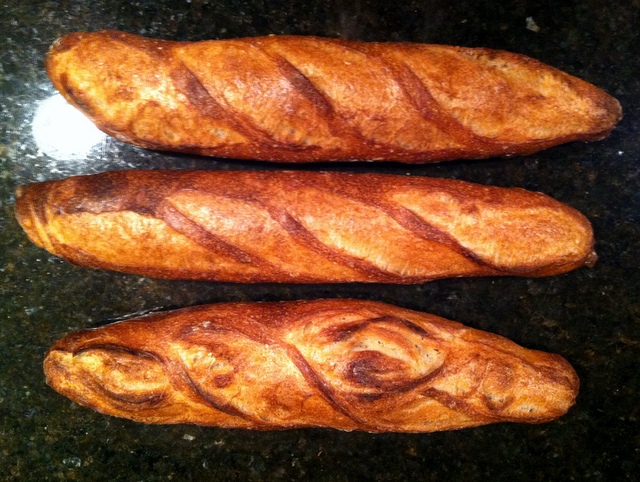
36 Hour SJSD. I decided this time to pay attention to the methodology – why the heck not?, although I have a few variations of my own applied here. These baguettes are a bit of a bear to get a good score on, but from what else I see on TFL, I think that I get the job done. In the past I’ve questioned the level of open crumb that TxFarmer achieves, somewhere in the stratosphere, and something that I don’t think I’ll ever approach. A significant artistic skill to be sure, but too much open crumb seems to be a bit too much, for me anyway.
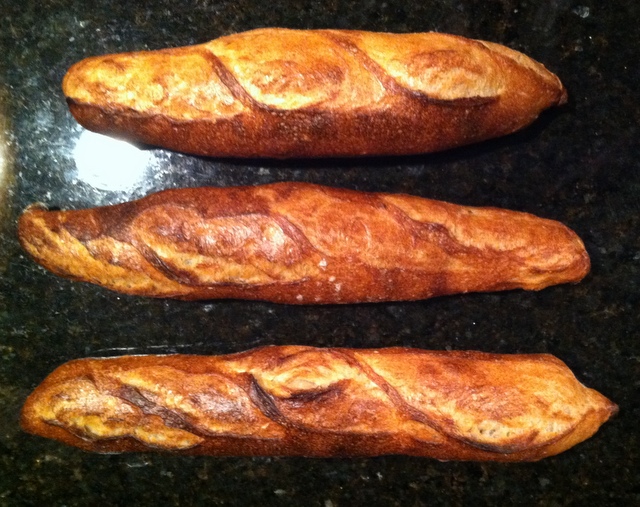
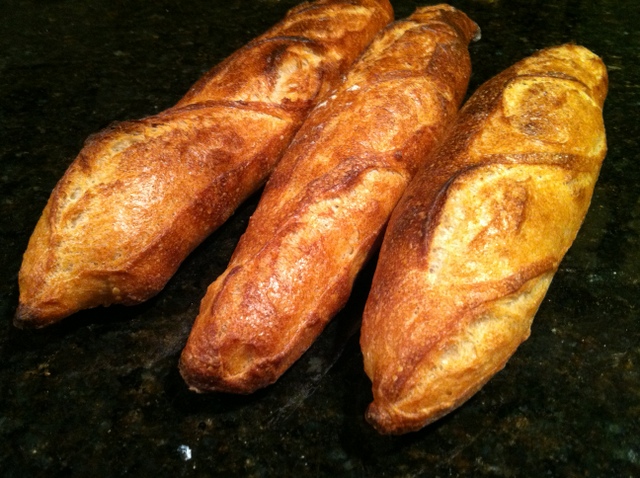
In summary, between the 36 Hour SJSD and the Gosselin SJSD, I think that I like the latter better. They both take about the same time to produce, clock-wise, with the Gosselins requiring the heavy lifting at the tail end, and the 36 Hour work load on the day prior to the bake. A more consistent scoring and, to my palate, a slightly better flavor makes the Gosselin version a bit more my cup of tea.
Of minor note, one of the variations to the original formulation of the SJSD levain has been to use more or all whole grain flour vs. AP flour during the build. A 50/50 mix of WW and rye. I don’t use any fancy flours, just Pillsbury Best AP, KA WW and Arrowhead Mills or Bob’s rye, because that is what my local market carries, not by specific choice. My salt is the standard Diamond Kosher flake salt.
I think that I’ll continue this journey with a few more formulae that I haven’t yet used, so beware, there may be a “take 3” occupying space on TFL down the road...
alan